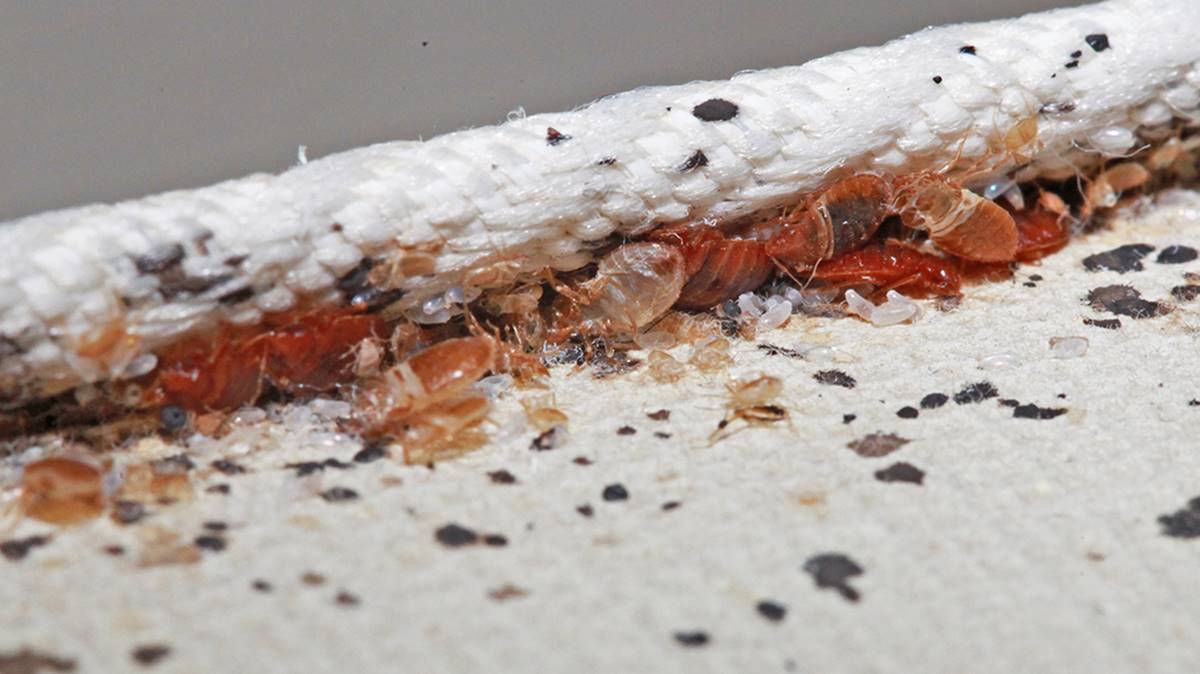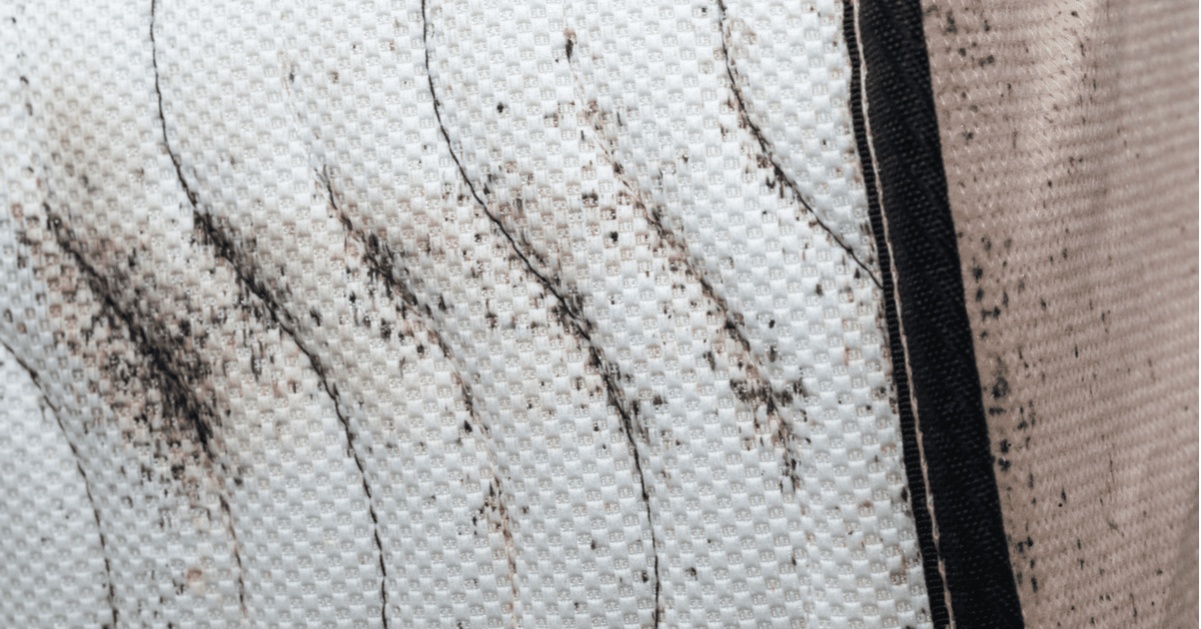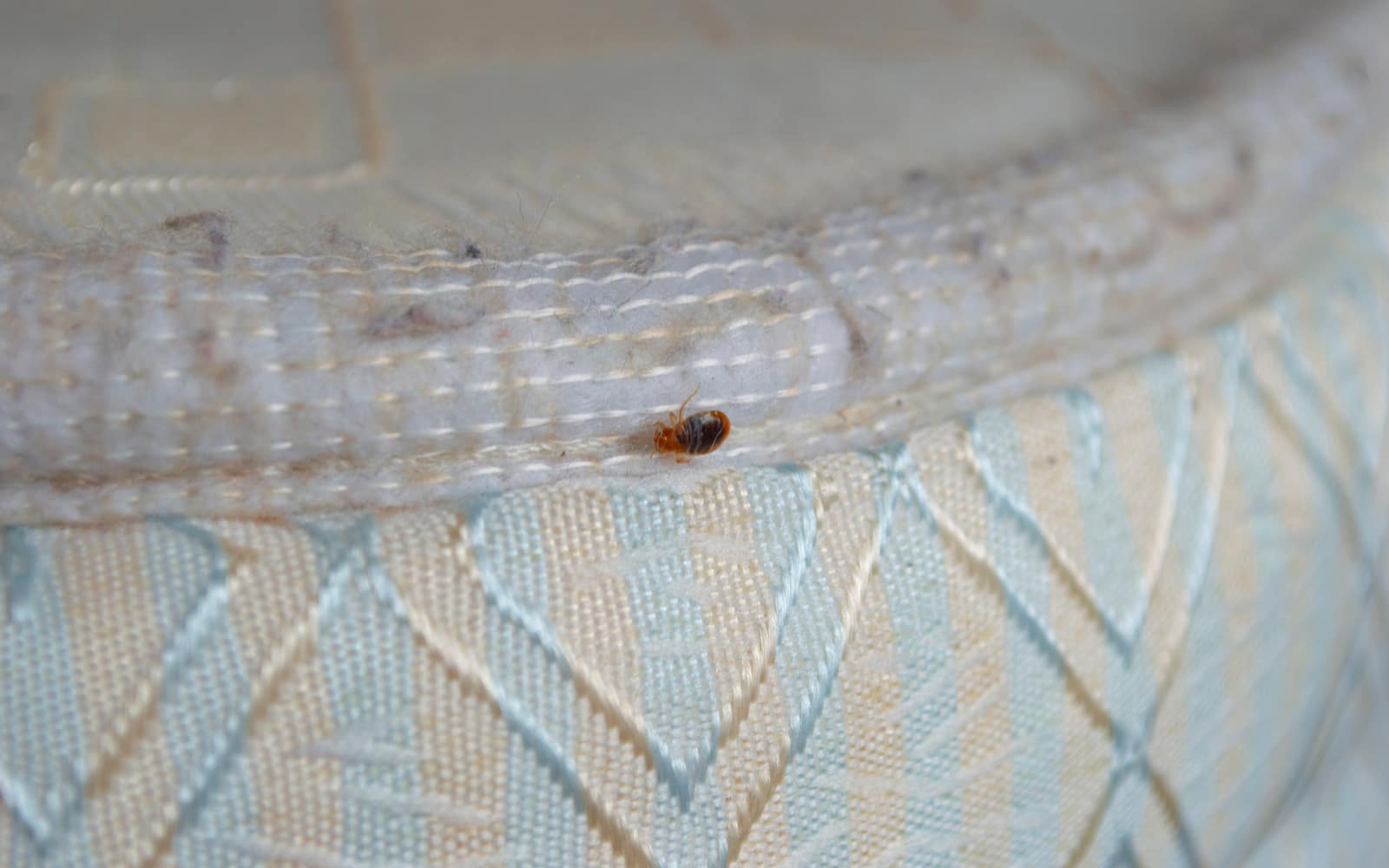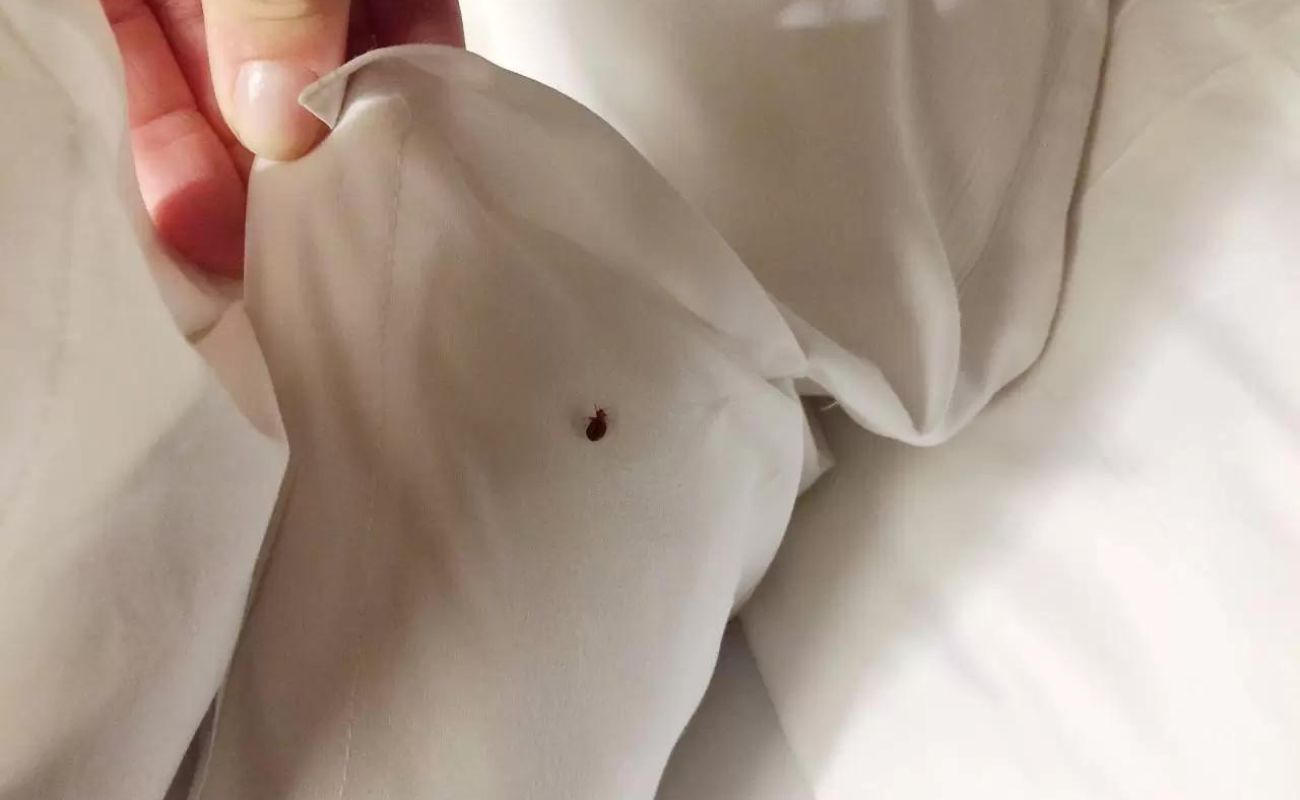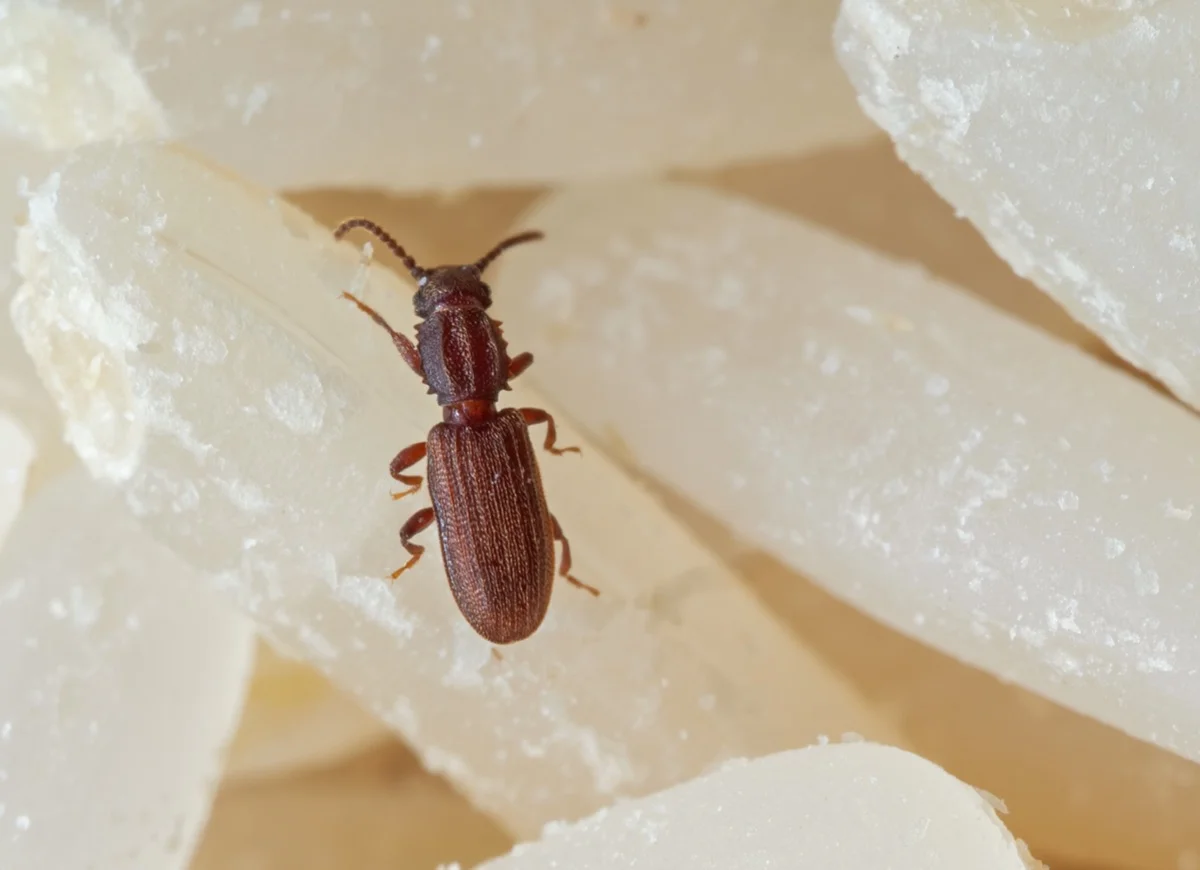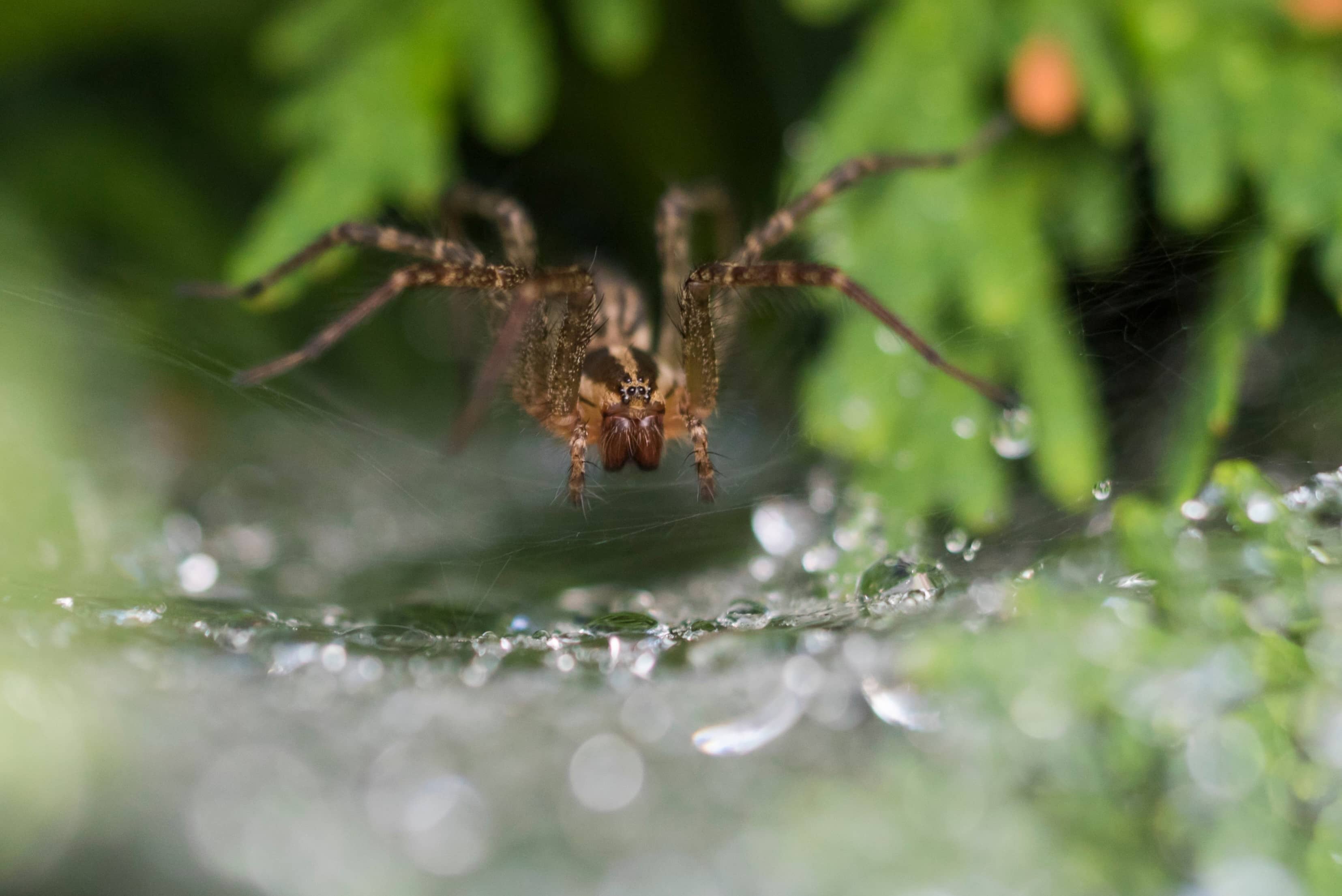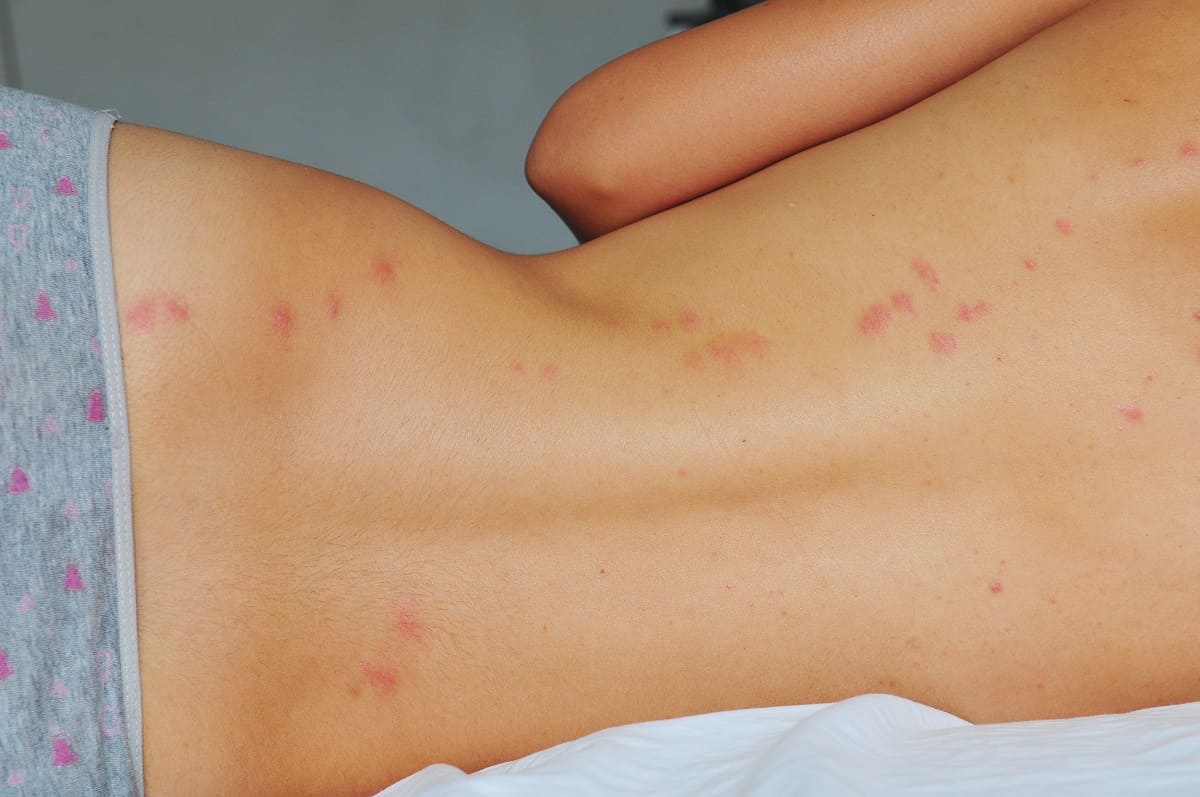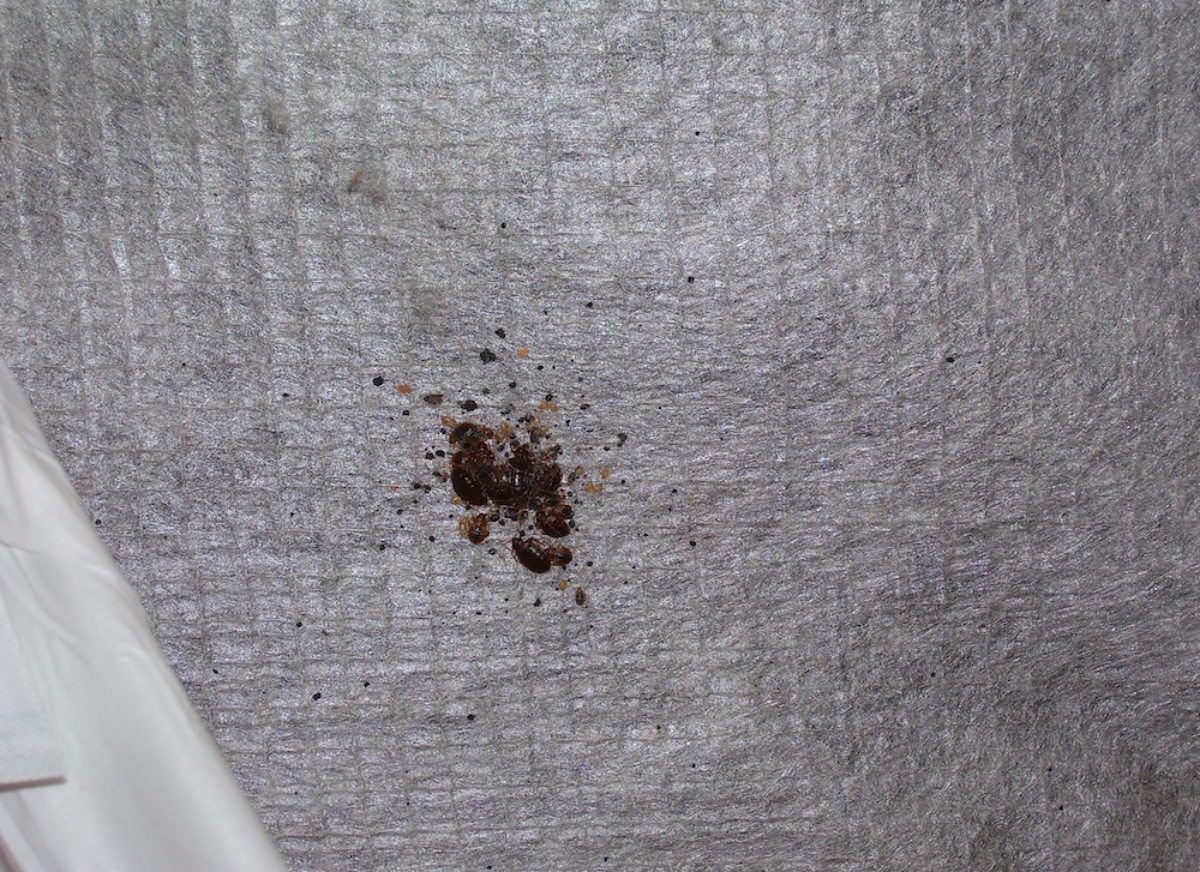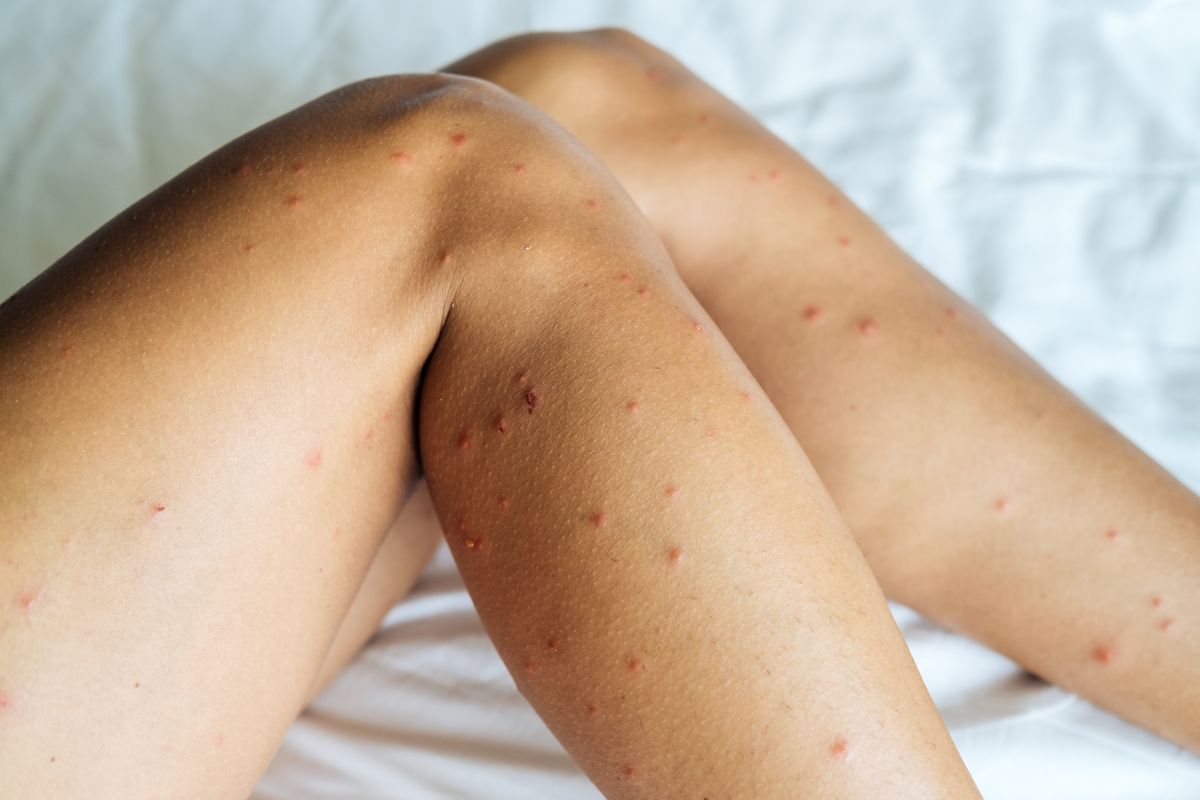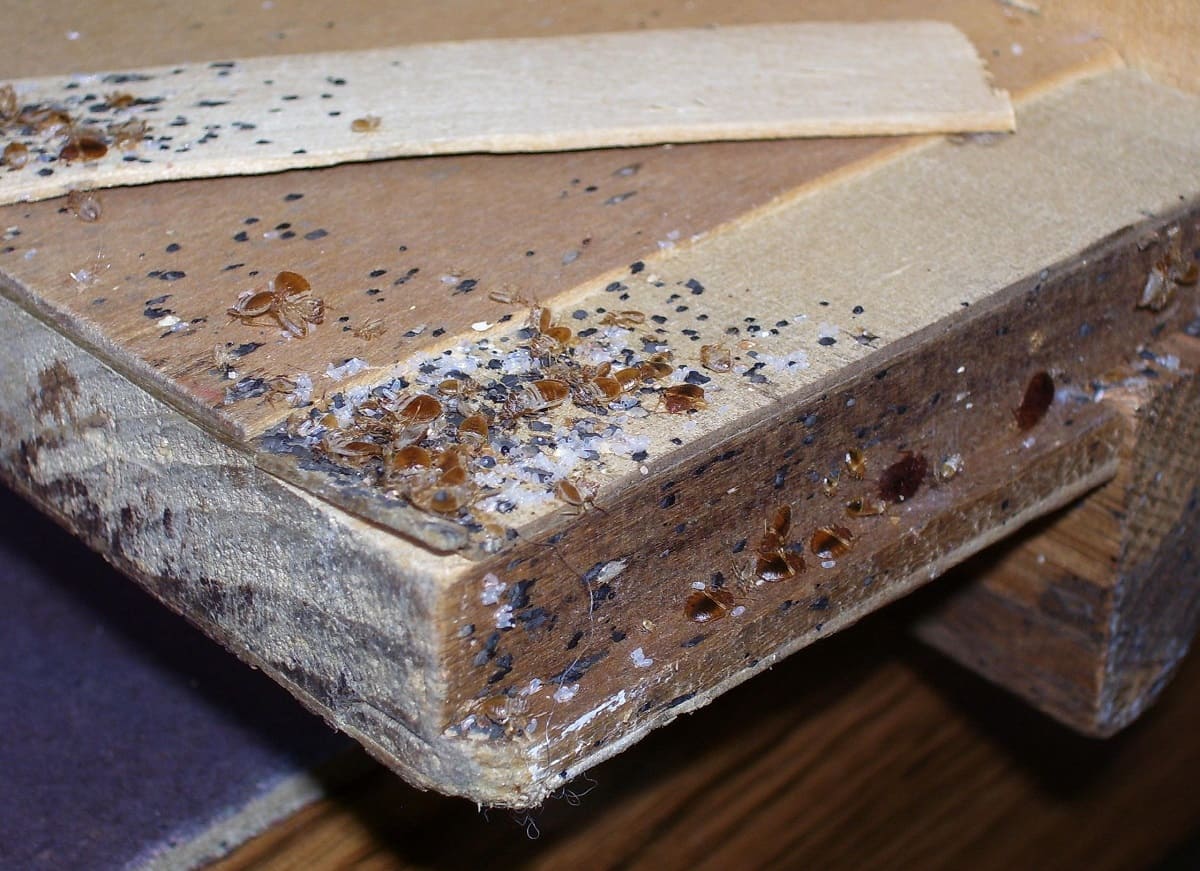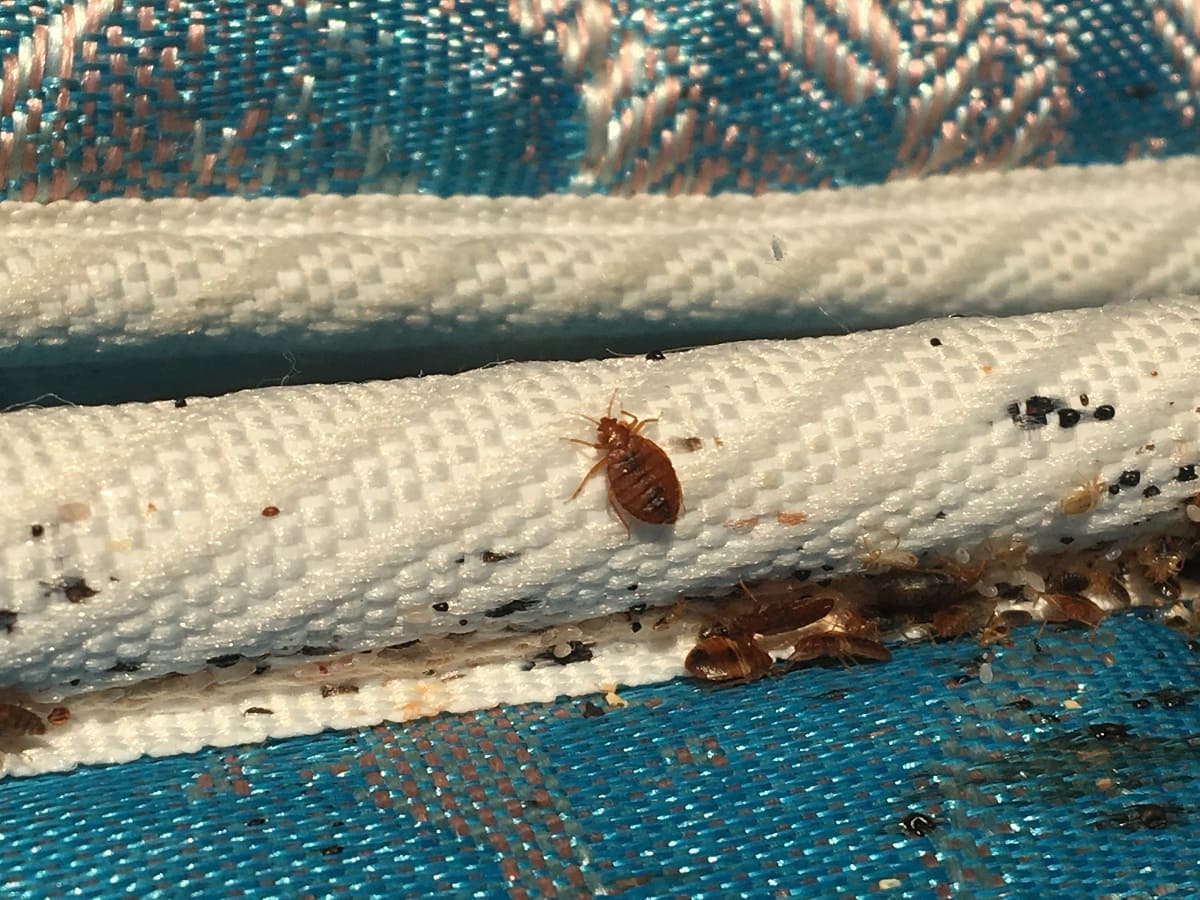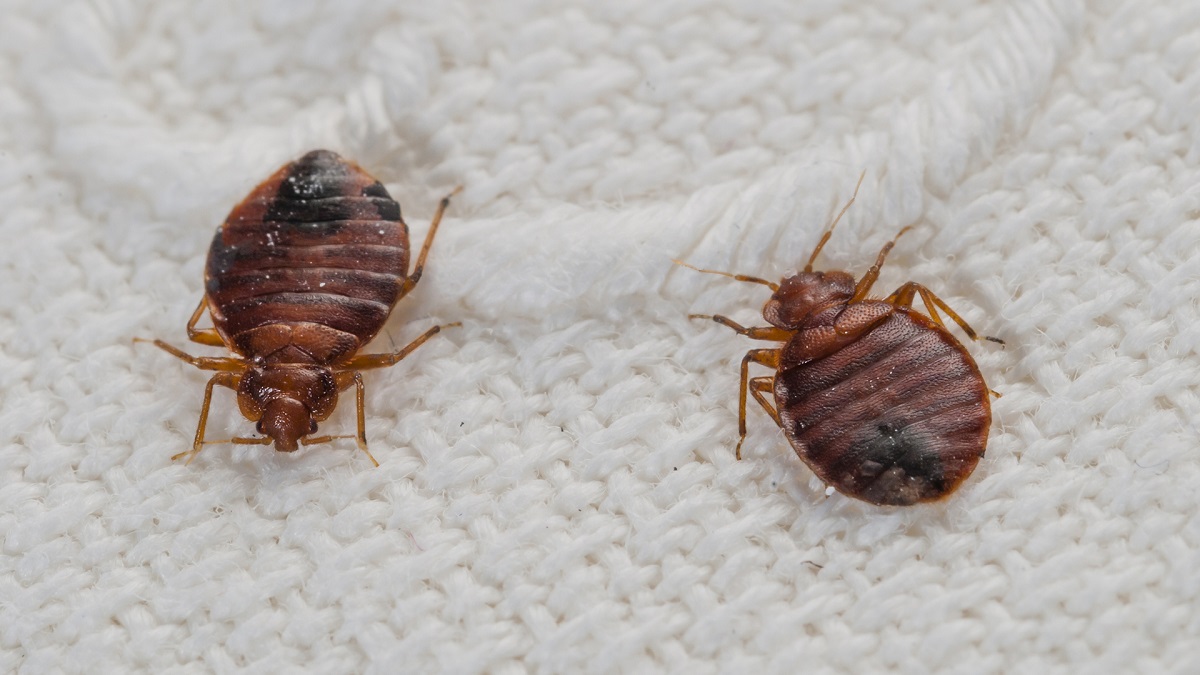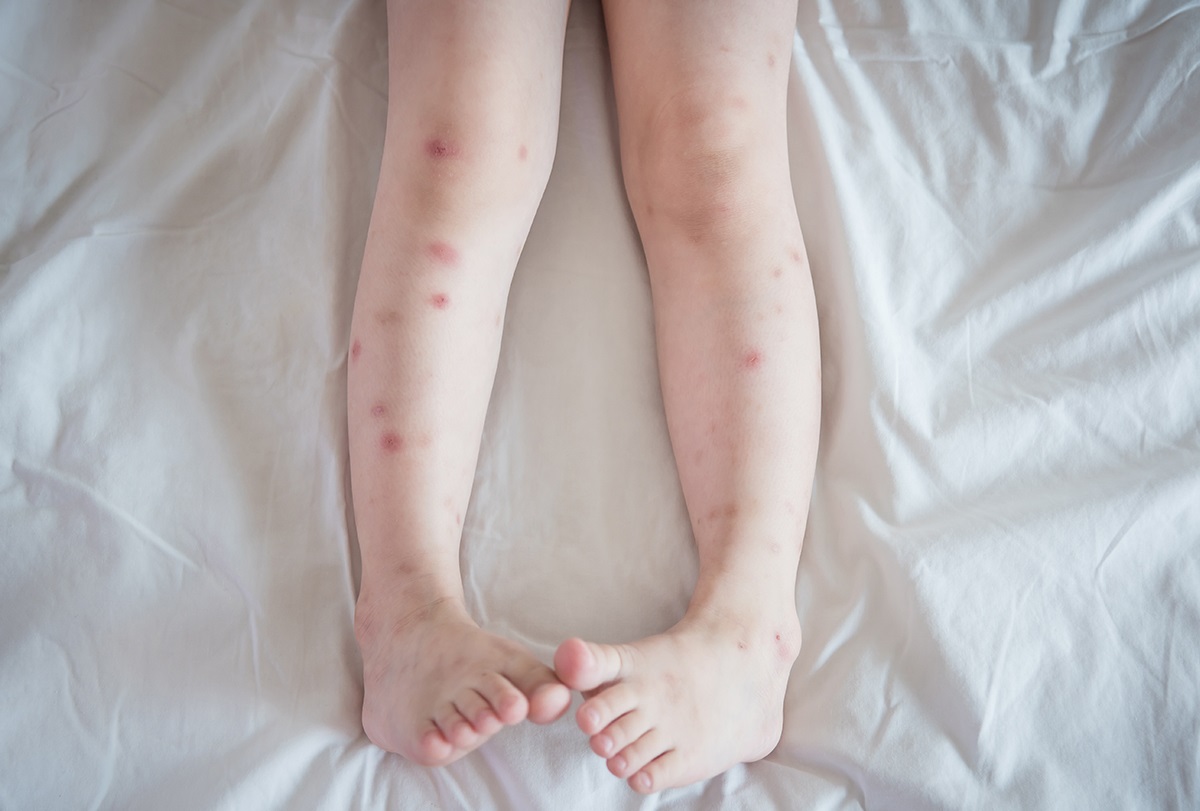Home>Furniture>Bedroom Furniture>What Bed Bug Bites Look Like
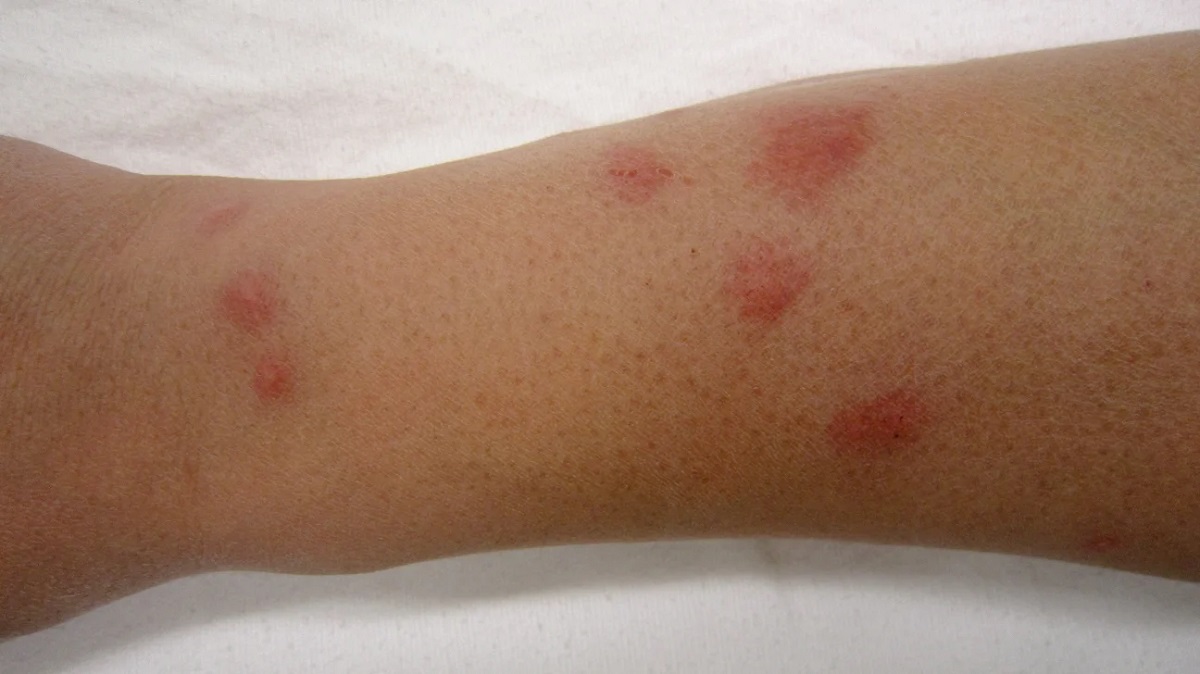

Bedroom Furniture
What Bed Bug Bites Look Like
Modified: February 23, 2024
Discover what bed bug bites look like and how to spot them. Protect your home and bedroom furniture from these pesky pests.
(Many of the links in this article redirect to a specific reviewed product. Your purchase of these products through affiliate links helps to generate commission for Storables.com, at no extra cost. Learn more)
Introduction
When it comes to the most essential piece of furniture in your bedroom, the bed takes the crown. It is a place where you seek comfort, relaxation, and peaceful slumber. However, there may come a time when unwelcome guests invade this sacred space – bed bugs.
Bed bugs are small, parasitic insects that feed on human blood. Although they are commonly associated with uncleanliness, they can infest even the cleanest of homes. One telltale sign of these pests is their bites, which can cause discomfort and irritation. Knowing how to identify bed bug bites is crucial in order to address the issue promptly and effectively.
In this article, we will explore what bed bug bites look like, the symptoms they cause, and how to distinguish them from other insect bites. We will also discuss when it is necessary to seek medical attention and provide tips for treating and preventing bed bug bites.
By increasing your knowledge and understanding of bed bug bites, you can take proactive measures to protect yourself and your loved ones from these annoying pests.
Key Takeaways:
- Identifying bed bug bites is crucial for prompt action. Look for clustered, linear or zigzag patterned bites with a small puncture mark. Seek medical attention for severe symptoms or allergic reactions.
- Prevention is key to safeguarding your bedroom from bed bugs. Regular inspections, proper encasement of mattresses, and maintaining a clean living space are essential. If infestation is suspected, seek professional assistance promptly.
Read more: What Helps Bed Bug Bites
Identifying Bed Bug Bites
Identifying bed bug bites is the first step in determining whether or not you are dealing with an infestation. While these bites can vary from person to person, there are some common characteristics that can help you recognize them.
One key factor in identifying bed bug bites is their pattern. Bed bug bites often appear in clusters or groups, as these nocturnal insects tend to feed multiple times during a single night. The bites are typically arranged in a linear or zigzag pattern, resembling a trail of small, red welts on the skin.
The location of the bites can also provide a clue. Bed bugs are opportunistic feeders and will bite any exposed area of the body while you are asleep. Common areas for bed bug bites include the arms, legs, neck, shoulders, and face.
Another characteristic of bed bug bites is their appearance over time. Initially, the bites may appear as small, red bumps resembling mosquito bites. However, bed bug bites have a distinctive feature – a small, central puncture mark where the bug inserted its mouthpart to extract blood. As the bites progress, they can become more swollen, itchy, and irritated.
It is important to note that not everyone reacts to bed bug bites in the same way. Some individuals may experience strong reactions, while others may have little to no reaction at all. Therefore, the presence or absence of visible bites does not necessarily indicate the absence or presence of a bed bug infestation.
If you suspect bed bugs are lurking in your home, it is crucial to conduct a thorough inspection to confirm their presence. Look for other signs of infestation such as live bugs, molted exoskeletons, or small blood stains on bedding or furniture.
Now that we have discussed how to identify bed bug bites, let’s delve into their appearance and the symptoms they can cause.
Appearance of Bed Bug Bites
Bed bug bites typically have a distinct appearance that sets them apart from other insect bites. Understanding the visual characteristics of these bites can help you differentiate them from other skin conditions.
Initially, bed bug bites may appear as small, raised bumps on the skin. They are often red and may have a slightly swollen or inflamed appearance. While individual bites may not be very large, they tend to cluster together in a pattern.
As the bites progress, they can become more pronounced and take on a more defined shape. They may develop into welts, with a raised central area and a surrounding red halo. In some cases, the bites may even blister or develop pus-filled centers.
What sets bed bug bites apart from other insect bites is the presence of a small, central puncture mark. This mark is where the bed bug inserted its proboscis, a tube-like structure, to extract blood from the host. This distinctive feature is not often seen in bites from other insects.
It is important to note that bed bug bites can vary in appearance and severity depending on individual reactions. While some people may develop pronounced welts and experience intense itching, others may have minimal reactions or no visible signs of bites at all.
In addition, the appearance of bed bug bites may differ based on the sensitivity of the person being bitten. Those who are highly sensitive to insect bites may experience more severe symptoms and a more noticeable appearance of the bites.
Now that we have discussed the appearance of bed bug bites, let’s move on to the symptoms they can cause.
Symptoms of Bed Bug Bites
Bed bug bites can cause a range of symptoms, which can vary from person to person. While some individuals may experience mild symptoms, others may have more severe reactions. It is important to be aware of these symptoms to identify bed bug bites and address them appropriately.
One of the most common symptoms of bed bug bites is itching. The bites can cause intense itchiness, which can be persistent and highly bothersome. Scratching the bites can lead to further irritation and potentially break the skin, increasing the risk of secondary infections.
In addition to itching, bed bug bites can cause redness and inflammation in the affected area. This can make the bites more noticeable, especially if they are clustered together.
Some individuals may also experience a burning or stinging sensation at the site of the bite. This can contribute to the overall discomfort caused by bed bug bites.
Another symptom of bed bug bites is the development of a rash. The rash may appear as small, raised bumps or as larger welts, depending on the individual’s reaction. The rash can be widespread if multiple bites are present.
Bed bug bites can also cause psychological symptoms. The persistent itching and discomfort can lead to sleep disturbances and anxiety, as individuals may become preoccupied with the presence of bed bugs in their sleeping areas.
It is important to note that while bed bug bites can cause significant discomfort and distress, they are not known to transmit diseases. However, excessive scratching and skin irritation can increase the risk of infection and should be avoided.
If you suspect that you have been bitten by bed bugs, it is advisable to observe the symptoms and take appropriate measures to alleviate the discomfort. In the next section, we will discuss allergic reactions to bed bug bites and how to distinguish them from other insect bites.
Allergic Reactions to Bed Bug Bites
While bed bug bites typically cause mild to moderate symptoms, some individuals may have an allergic reaction to the bites. Allergic reactions occur when the immune system overreacts to a substance, in this case, the saliva of the bed bug.
Common signs of an allergic reaction to bed bug bites include severe itching, excessive redness and swelling, and the development of hives or a rash beyond the area of the bites. In some cases, individuals may also experience difficulty breathing, dizziness, or even anaphylaxis, a severe and potentially life-threatening reaction.
If you suspect you are having an allergic reaction to bed bug bites, it is important to seek medical attention immediately. A healthcare professional can evaluate the symptoms and provide appropriate treatment to alleviate the allergic reaction. They may prescribe antihistamines or recommend other medications to help reduce itching and swelling.
If you have a known history of severe allergic reactions, such as anaphylaxis, it is advisable to have an epinephrine auto-injector (such as an EpiPen) readily available in case of emergencies.
It is crucial to note that allergic reactions to bed bug bites are relatively rare. Most individuals will experience mild to moderate symptoms that can be managed with over-the-counter remedies or natural remedies such as applying a cold compress or using soothing lotions or creams.
Now, let’s explore how to distinguish bed bug bites from bites of other insects.
Inspect your skin for small, red, itchy bumps in a cluster or line. Look for signs of bed bugs in your mattress and bedding to confirm the source of the bites.
Read more: What Does A Bed Bug Look Like
Distinguishing Bed Bug Bites from Other Insect Bites
When you notice bites on your skin, it’s important to determine whether they are from bed bugs or another type of insect. While it may be challenging to identify the specific culprit, there are some key differences that can help you distinguish bed bug bites from bites of other insects.
One way to differentiate bed bug bites is by their pattern. As mentioned earlier, bed bug bites often appear in clusters or groups, arranged in a linear or zigzag pattern. This is because bed bugs tend to bite multiple times in a feeding session. In contrast, other insect bites such as mosquito or flea bites may appear as individual, scattered bites.
The location of the bites can also provide a clue. Bed bugs typically bite exposed areas of the body while you are sleeping, such as the arms, legs, neck, shoulders, and face. Flea bites, on the other hand, are often found on the lower legs and ankles, while mosquito bites can occur anywhere on the body.
In terms of appearance, bed bug bites often have a distinctive characteristic – a small, central puncture mark where the bug inserted its mouthpart to extract blood. This feature is not commonly seen in other insect bites.
Furthermore, the reaction to the bites can vary between individuals. While some people may have strong reactions to bed bug bites with pronounced redness, swelling, and itching, others may have minimal reactions or no visible signs at all. In contrast, reactions to other insect bites, such as mosquito or flea bites, are typically more uniform among individuals.
If you are still unsure about the source of the bites or suspect a bed bug infestation, it is recommended to consult with a pest control professional. They can conduct a thorough inspection of your home to confirm the presence of bed bugs and provide appropriate treatment.
Now that you know how to distinguish bed bug bites from other insect bites, let’s discuss when it is necessary to seek medical attention.
When to Seek Medical Attention
In most cases, bed bug bites do not require medical attention and can be managed with home remedies or over-the-counter treatments. However, there are situations where it is necessary to seek medical attention for bed bug bites.
If you experience severe or persistent symptoms, it is recommended to consult a healthcare professional. Signs that may indicate the need for medical attention include:
- Excessive swelling, redness, or inflammation around the bites
- Intense itching that does not improve with over-the-counter remedies
- Bites that become increasingly painful or develop pus
- Signs of infection, such as warmth, tenderness, or drainage from the bite site
- Allergic reactions such as difficulty breathing, dizziness, or anaphylaxis
- Systemic symptoms such as fever, body aches, or flu-like symptoms
A healthcare professional can evaluate your symptoms, provide appropriate treatment, and determine if any underlying conditions require attention. They may prescribe stronger anti-itch medications, recommend topical or oral antibiotics for infected bites, or suggest other interventions to alleviate your symptoms.
If you have a known allergy to bed bug bites or a history of severe allergic reactions, it is crucial to seek immediate medical attention if you experience any signs of anaphylaxis. Carry an epinephrine auto-injector (such as an EpiPen) with you and use it as directed in case of an emergency.
Remember, prevention is key when it comes to bed bugs. Taking measures to avoid infestations and being proactive in addressing any signs of an infestation can help prevent the need for medical intervention.
Now, let’s explore some tips for treating bed bug bites and preventing future infestations.
Treating Bed Bug Bites
While the best way to treat bed bug bites is to eliminate the underlying infestation, there are steps you can take to alleviate the discomfort and promote healing in the meantime.
1. Clean the area: Wash the bites gently with mild soap and water to remove any dirt or bacteria. Pat the area dry with a clean towel.
2. Reduce itching and inflammation: Apply a cold compress or ice pack to the bites for 10-15 minutes to help reduce swelling and numb the area. You can also use over-the-counter hydrocortisone creams or calamine lotion to relieve itching and inflammation.
3. Avoid scratching: Although it may be tempting, scratching the bites can lead to further irritation and possibly break the skin, increasing the risk of infection. If you can’t resist the urge to scratch, consider wearing cotton gloves or using a barrier, such as adhesive bandages, to prevent direct contact with the bites.
4. Moisturize the skin: Apply a hypoallergenic moisturizer or aloe vera gel to keep the skin hydrated and prevent dryness and itchiness.
5. Take over-the-counter antihistamines: Oral antihistamines, such as diphenhydramine (Benadryl), can help reduce itching and promote better sleep if the bites are causing significant discomfort.
6. Avoid further exposure: Take steps to prevent additional bites by eliminating bed bugs from your home. This may involve hiring a professional exterminator, washing bedding and clothing in hot water, vacuuming thoroughly, and using mattress and box spring encasements to trap any remaining bed bugs.
If the bites do not show signs of improvement or if you experience severe symptoms or signs of infection, it is advisable to consult a healthcare professional for further evaluation and treatment.
Remember that while treating the bites is important, addressing the underlying bed bug infestation is crucial to prevent future bites and discomfort. Now, let’s move on to discussing prevention and control measures for bed bugs.
Prevention and Control of Bed Bugs
Preventing and controlling bed bugs require a combination of proactive measures and professional intervention. By adopting these precautions, you can reduce your risk of a bed bug infestation.
1. Regularly inspect your sleeping area: Check your mattress, box spring, and bed frame for any signs of bed bugs, such as live bugs, fecal stains (dark spots), molted exoskeletons, or blood stains. Inspect cracks and crevices in furniture, walls, and baseboards as well.
2. Encase your mattress and box spring: Use bed bug-proof encasements to cover your mattress and box spring. This will help prevent bed bugs from infesting these items and make it easier to detect and eliminate them if they do appear.
3. Keep a tidy living space: Clutter provides hiding places for bed bugs, so it’s essential to keep your living areas clean and clutter-free. Regularly vacuum carpets, upholstery, and any other potential hiding spots to remove both bed bugs and their eggs.
4. Be cautious when traveling: When staying in hotels or other accommodation, inspect the room for signs of bed bugs before unpacking. Keep your luggage elevated and away from the bed and furniture. When you return home, wash and dry your travel clothes on high heat to kill any potential hitchhiking bed bugs.
5. Seal cracks and crevices: Use caulk or sealant to close up any cracks, gaps, or crevices in walls, baseboards, and furniture. This will eliminate potential hiding spots for bed bugs and limit their ability to move around.
6. Be cautious of used furniture and clothes: If you purchase second-hand furniture or receive used clothing, inspect them thoroughly before bringing them into your home. Bed bugs can easily hitch a ride on these items.
If you suspect a bed bug infestation or need assistance with control measures, it is advisable to consult a professional pest control company. They have the expertise and tools to effectively eliminate bed bugs from your home.
Remember, early detection and intervention are key to minimizing the impact of bed bugs. By staying vigilant and taking preventive measures, you can significantly reduce the likelihood of a bed bug infestation.
Now that you are armed with knowledge on preventing and controlling bed bugs let’s conclude this article.
Read more: What Does A Dead Bed Bug Look Like
Conclusion
Bed bugs can disrupt the comfort and tranquility of your bedroom. Identifying their bites and understanding their appearance and symptoms is crucial for prompt and effective action. While bed bug bites may vary in appearance and severity, their characteristic pattern and the presence of a small puncture mark can help distinguish them from bites of other insects.
If you experience severe symptoms or allergic reactions to bed bug bites, it is important to seek medical attention. A healthcare professional can provide appropriate treatment and guidance to alleviate your symptoms and address any underlying conditions.
To treat bed bug bites, it is recommended to clean the area, reduce itching and inflammation, moisturize the skin, and avoid scratching. However, treating the bites alone is not enough; preventing and controlling bed bugs is paramount.
Preventing bed bug infestations involves regular inspections, proper encasement of mattresses and box springs, maintaining a clean living space, and being cautious when traveling or acquiring used furniture and clothes. Seeking professional assistance is advisable if you suspect a bed bug infestation or need help with control measures.
By implementing proactive prevention strategies and responding promptly to any signs of bed bugs, you can safeguard your bedroom and maintain a peaceful sleeping environment.
Remember, while bed bug bites may cause discomfort, they do not transmit diseases. However, excessive scratching can lead to secondary infections, so it is crucial to exercise caution and seek medical attention when necessary.
Stay informed, act decisively, and take the necessary steps to prevent, identify, and address bed bug infestations. By doing so, you can ensure a restful and pest-free sleep environment in your bedroom.
Frequently Asked Questions about What Bed Bug Bites Look Like
Was this page helpful?
At Storables.com, we guarantee accurate and reliable information. Our content, validated by Expert Board Contributors, is crafted following stringent Editorial Policies. We're committed to providing you with well-researched, expert-backed insights for all your informational needs.
